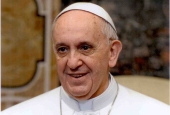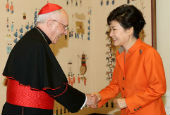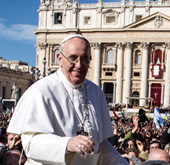-
 Korea.net's 24-hour YouTube channel
Korea.net's 24-hour YouTube channel- NEWS FOCUS
- ABOUT KOREA
- EVENTS
- RESOURCES
- GOVERNMENT
- ABOUT US
"When translated, Yaso (耶蘇) is the king to grant salvation to the world and Dusa (陡斯) is the name our Heavenly God, Cheonju (天主), took after incarnation (降生). Dusa created heaven and earth and all things dwelling upon it when earth was a formless void. First of mankind, Ahdang (亞當), followed Ahmal‘s (阿襪) words and denied Dusa. Therefore Dusa came down to earth to deliver man from sin on the 57th day (Gyeongshin) of the 2nd year of the reign of the Han (漢) emperor Ae (哀帝), in the 57th year after the founding of Silla, in the 18th year of Baeje, the 19th year of Goguryeo King Yuri, according to the word of Eemadu from Yeodeokahguk, the equivalent of Daejinguk in the past, through the body of the Virgin (童貞女) Mary (瑪利亞). He roamed far and wide while being called Yaso for 33 years, giving testament to the Right Way (正道) and was tried by villain Banjakbillalda (般雀比剌多) and under false accusation (誣告) was sentenced to capital punishment (極刑). Resurrected three days after his death, he lived for 40 days more and completed his work of redeeming the world. Some say that he returned to the Heavens three days after his resurrection, declaring that the flesh had died and that the will of God had been resurrected and returned to heaven.”
The above is 18th century Joseon silhak scholar Lee Deok-mu writing about Catholicism. "Yaso” is the Sino-notation for Jesus Christ. "Dusa” is the Sino-phonetic notation of the Latin word “Deus,” meaning, “God.” "Ahdang” is the biblical forefather of mankind, Adam. “Yeodukahguk” is the country of Italy, “Judea” in Sino-phonetic notation. Jesus’ mother, Mary, is recorded as, “Mary.” The villain Banjakbillalda is Jesus’ executioner, Pontius Pilate, the Roman procurator of Judea. Like the Bible, the writing describes Jesus’ resurrection three days after his death and living for 40 days more. Even though this record was written during a time when Catholicism was first introduced to Joseon, it captures the true nature of Catholicism.
Going further, Lee Deok-mu didn’t spare any detail when describing Catholicism.
“Italia’s (意達里亞) Lama castle (羅瑪城) has a circumference of approximately 59 kilometers. After Yaso’s death, a man called Baekdallok (伯多祿) started to preach the religion from this castle. Continuing after his reign, the king of this religion, Gyowang (敎王), continued to live on in the castle and all countries paid their respect. Their customs entirely adhered to worshipping the Heavenly God, Cheonju. Every street, from the capital to the countryside, has a cathedral (Romanised in Sino-Korean as Cheonjudang). In each cathedral there is a man in charge of all church affairs (敎務). He is called the shinbu (神父), a priest.”
These records coincide exactly with Catholicism today. The “Lama castle” is Italy’s Rome (Roma). "Baekdallok” is Saint Peter (San Pietro), one of Jesus’s disciples. "Gyowang” is the “Gyohwang” of today and "shinbu” is, word for word, a Catholic priest.
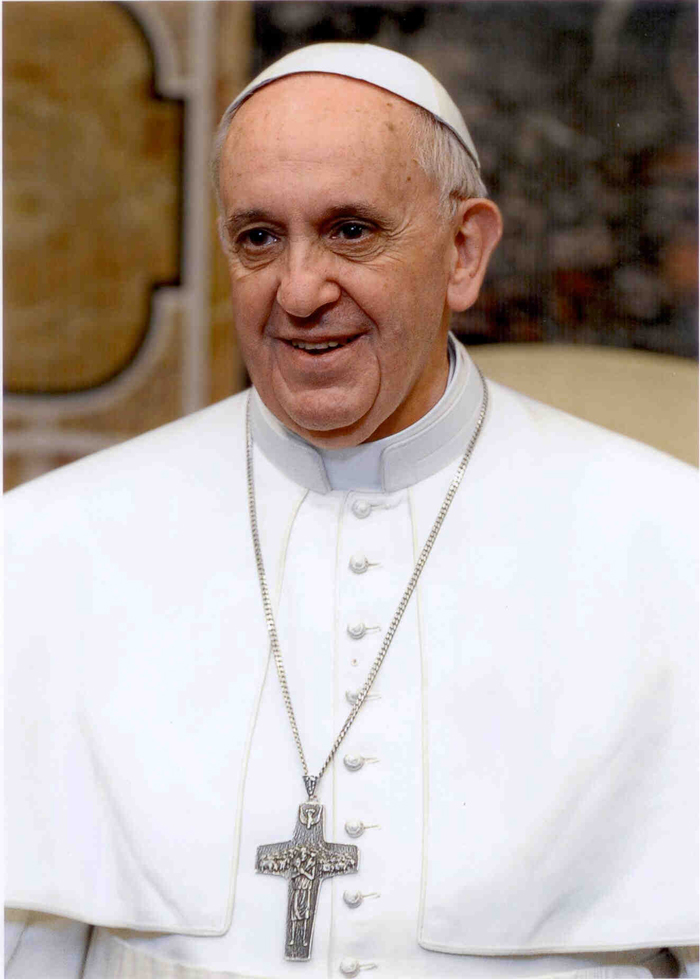
This August, Pope Francis will visit Korea. During his stay, Pope Francis will conduct a dedication mass and a beatification on August 15 in Daegu and visit the sacred grounds of the Haemi in Seosan, Chungcheongnam-do (South Chungcheong Province), amongst other things. The beatification will be for Paul Yoon Ji-chung and 123 other martyrs.
As the key event of his trip to Korea, the beatification is a holy ceremony naming a person recognized by the Catholic Church as being "blessed.” A beatification is one step before canonization. Yoon Ji-chung and 123 colleagues were persecuted on the charge of disturbing the Confucius order during 18th, 19th and 20th century Joseon.
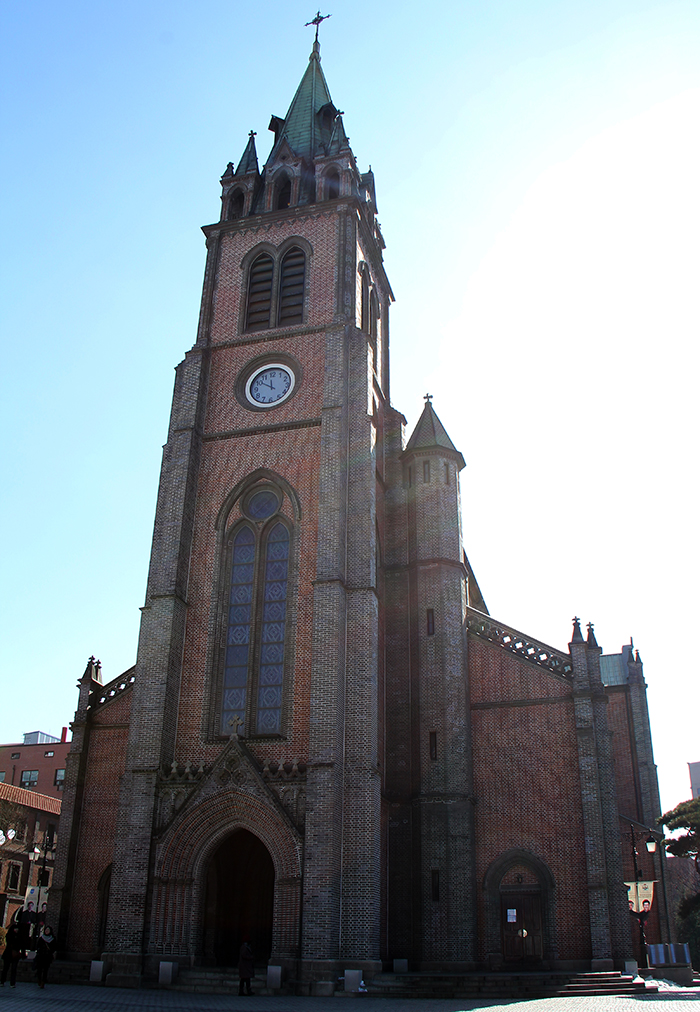
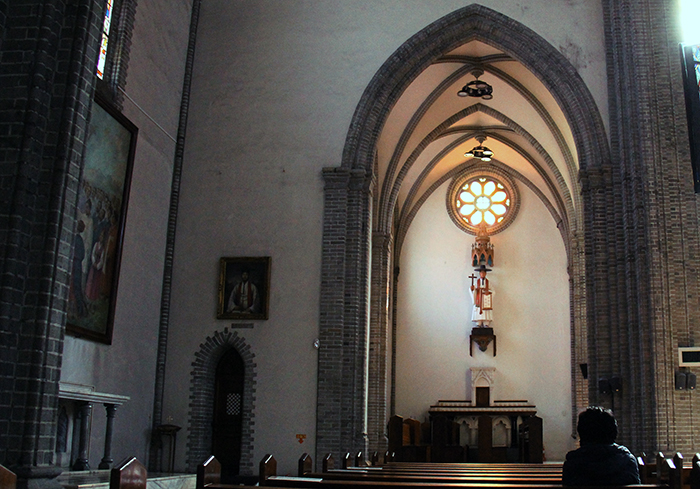
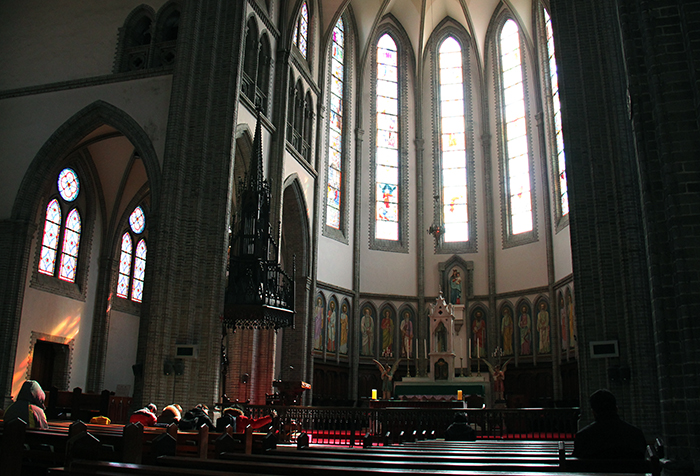
Who was this Yoon Ji-chung, the first named on the list of martyrs to be beatified? Yoon Ji-chung (尹持忠) (1759-1791) was the first Korean to become a martyr. He was christened as “Paul,” and was born to a noble name, the Yoon family from Haenam (海南) in Jeollanam-do (South Jeolla Province). Joseon’s most famous poet, Yoon Seon-do, was his great-great-great-great-great grandfather. Outstanding artist Yoon Du-suh was his great grandfather. His parents named him Ji-chung to encourage him to keep his allegiance to the king. He adhered strictly to Confucian values and passed the first door to becoming an official, the Jinsasi exam at the age of 24.
However, after reading "The True Meaning of the Lord of Heaven,” by Matteo Ricci (1552-1610), a Jesuit missionary in China, he learnt of the Catholic creed and joined the faith. In 1791, on the occasion of his mother’s death, he refused to conduct the traditional Confucius ceremony. Due to this act, his relatives and fellow Confucius scholars criticized him for being an ungrateful son and accused him of hurting Confucian ethics. He paid no heed to the pressure surrounding him and carried on with his beliefs, to be executed in the end.
To prepare for the upcoming papal visit, the Korean bishops will hold a regular meeting from March 24 to 28. Preparations for the visit and the details of the beatification ceremony should be key agenda items discussed at this meeting.
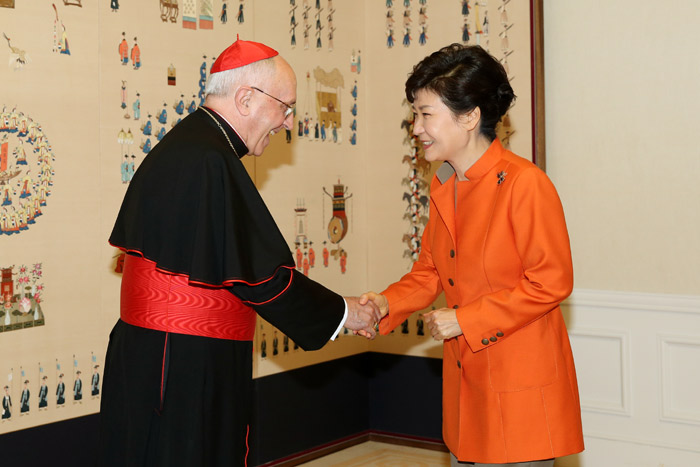
This upcoming papal visit was made possible by the ongoing communication between the Korean government and the Holy See. Last year on October 2, when President Park Geun-hye met with Cardinal Fernando Filoni, the prefect of the Congregation for the Evangelization of Peoples, she mentioned Paul Yoon Ji-chung and the 123 martyrs and invited the pope to Korea. She said that she heard about the ongoing discussions concerning the beatification and said that, “I hope our martyrs’ spirits will be commemorated as invaluable heritage with a swift decision.”
The long yearning of Korean Catholics to untarnish the reputations of the martyrs finally bore fruit.
By Wi Tack-whan, Paik Hyun
Korea.net Staff Writers
whan23@korea.kr
The above is 18th century Joseon silhak scholar Lee Deok-mu writing about Catholicism. "Yaso” is the Sino-notation for Jesus Christ. "Dusa” is the Sino-phonetic notation of the Latin word “Deus,” meaning, “God.” "Ahdang” is the biblical forefather of mankind, Adam. “Yeodukahguk” is the country of Italy, “Judea” in Sino-phonetic notation. Jesus’ mother, Mary, is recorded as, “Mary.” The villain Banjakbillalda is Jesus’ executioner, Pontius Pilate, the Roman procurator of Judea. Like the Bible, the writing describes Jesus’ resurrection three days after his death and living for 40 days more. Even though this record was written during a time when Catholicism was first introduced to Joseon, it captures the true nature of Catholicism.
Going further, Lee Deok-mu didn’t spare any detail when describing Catholicism.
“Italia’s (意達里亞) Lama castle (羅瑪城) has a circumference of approximately 59 kilometers. After Yaso’s death, a man called Baekdallok (伯多祿) started to preach the religion from this castle. Continuing after his reign, the king of this religion, Gyowang (敎王), continued to live on in the castle and all countries paid their respect. Their customs entirely adhered to worshipping the Heavenly God, Cheonju. Every street, from the capital to the countryside, has a cathedral (Romanised in Sino-Korean as Cheonjudang). In each cathedral there is a man in charge of all church affairs (敎務). He is called the shinbu (神父), a priest.”
These records coincide exactly with Catholicism today. The “Lama castle” is Italy’s Rome (Roma). "Baekdallok” is Saint Peter (San Pietro), one of Jesus’s disciples. "Gyowang” is the “Gyohwang” of today and "shinbu” is, word for word, a Catholic priest.

Pope Francis (photo courtesy by Apostolic Nunciature in Korea)
This August, Pope Francis will visit Korea. During his stay, Pope Francis will conduct a dedication mass and a beatification on August 15 in Daegu and visit the sacred grounds of the Haemi in Seosan, Chungcheongnam-do (South Chungcheong Province), amongst other things. The beatification will be for Paul Yoon Ji-chung and 123 other martyrs.
As the key event of his trip to Korea, the beatification is a holy ceremony naming a person recognized by the Catholic Church as being "blessed.” A beatification is one step before canonization. Yoon Ji-chung and 123 colleagues were persecuted on the charge of disturbing the Confucius order during 18th, 19th and 20th century Joseon.



The location where martyr Yoon Ji-chung learnt about Catholicism has become the Myeondong Cathedral. (photo: Paik Hyun)
Who was this Yoon Ji-chung, the first named on the list of martyrs to be beatified? Yoon Ji-chung (尹持忠) (1759-1791) was the first Korean to become a martyr. He was christened as “Paul,” and was born to a noble name, the Yoon family from Haenam (海南) in Jeollanam-do (South Jeolla Province). Joseon’s most famous poet, Yoon Seon-do, was his great-great-great-great-great grandfather. Outstanding artist Yoon Du-suh was his great grandfather. His parents named him Ji-chung to encourage him to keep his allegiance to the king. He adhered strictly to Confucian values and passed the first door to becoming an official, the Jinsasi exam at the age of 24.
However, after reading "The True Meaning of the Lord of Heaven,” by Matteo Ricci (1552-1610), a Jesuit missionary in China, he learnt of the Catholic creed and joined the faith. In 1791, on the occasion of his mother’s death, he refused to conduct the traditional Confucius ceremony. Due to this act, his relatives and fellow Confucius scholars criticized him for being an ungrateful son and accused him of hurting Confucian ethics. He paid no heed to the pressure surrounding him and carried on with his beliefs, to be executed in the end.
To prepare for the upcoming papal visit, the Korean bishops will hold a regular meeting from March 24 to 28. Preparations for the visit and the details of the beatification ceremony should be key agenda items discussed at this meeting.

President Park Geun-hye (right) shakes hands with Cardinal Fernando Filoni, prefect of the Congregation for the Evangelization of Peoples, at Cheong Wa Dae on October 2, 2013. (photo: Cheong Wa Dae)
This upcoming papal visit was made possible by the ongoing communication between the Korean government and the Holy See. Last year on October 2, when President Park Geun-hye met with Cardinal Fernando Filoni, the prefect of the Congregation for the Evangelization of Peoples, she mentioned Paul Yoon Ji-chung and the 123 martyrs and invited the pope to Korea. She said that she heard about the ongoing discussions concerning the beatification and said that, “I hope our martyrs’ spirits will be commemorated as invaluable heritage with a swift decision.”
The long yearning of Korean Catholics to untarnish the reputations of the martyrs finally bore fruit.
By Wi Tack-whan, Paik Hyun
Korea.net Staff Writers
whan23@korea.kr
Most popular
- First hearing-impaired K-pop act hopes for 'barrier-free world'
- Expats could account for 7% of population in 20 years: report
- 'Mad Max' director impressed by 'cinema-literate' Korean viewers
- Show in Italy to present 'thought-filled' Korean craftworks
- Romanian presidential couple visits national cemetery









